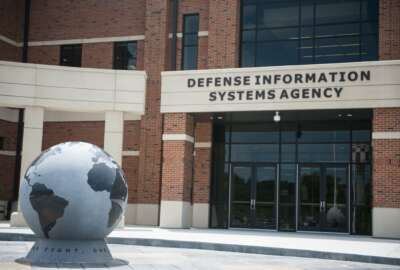DISA’s PEO Transport wants ‘graceful transition plan’ from industry
DISA's PEO for transport, which is essentially the internet for the Defense Department, is looking for capabilities that have lifespan standards.
The Defense Information Systems Agency’s program executive office for transport provides the foundational infrastructure for the Defense Department’s networking — it oversees satellite communication gateways, integrates command and control systems and operates the transport for internet access points.
The office works closely with DISA’s J9 hosting and compute directorate to ensure that the cloud access providers have the necessary network infrastructure to support reliable communication and data transport. It also helps the J6 endpoint services and global service center make sure that various locations are interconnected and can communicate seamlessly.
“We are like the electric company. No one knows about us until something goes wrong — the same thing goes with the transport,” Chris Paczkowski, the PEO transport director, told Federal News Network at the AFCEA TechNet Cyber conference in Baltimore in June.
Paczkowski’s office is essentially the internet for the department. This means that the office oversees a wide range of programs, each with its own goals and objectives, making it challenging for Paczkowski’s teams to manage those projects in a more integrated way.
Paczkowski said the office is looking to standardize its teams to create more consistency across more than 50 projects the office manages. It is also moving toward more centralized contracts, particularly in areas such as cybersecurity. And as the Defense Department is moving toward adopting next-generation networking gear, the PEO transport is seeking standards-based solutions from multiple vendors. But DISA is dealing with a mountain of legacy equipment as new technology gets piled on top of it.
“We’re hoarders. If there is something that works — I’m going to use this until it doesn’t work anymore because I usually don’t have the dollars to keep trying to do the next greatest thing,” Paczkowski said.
“As you go from one booth to the next, it’s something just a leapfrog better. If I did that all the time, I would be trying to shift over 350 different locations worldwide constantly. And we just can’t operate that way. We look for a capability that has lifespan standards and being able to work it. We have thousands of pieces of equipment. And just imagine if all the highways getting into Baltimore were going to get paved today. And so they shut it down just to do the paving, that’s no different than we have to say, ‘Hey, we have to upgrade our equipment, let’s take down this link to be able to do that.’ No, I’ve got a conference, I work at the hospital, fire depart, I need to be going to work. Trying to balance that is another reason why we have to find a capability that has that longevity and flexibility for us to be able to implement things in a parallel manner.”
To address the issue of mounting legacy equipment, Paczkowski said he wants to see more roadmaps and more “graceful transitions” from the industry.
“Everyone wants to sell something new and, and when this is done, then I get something else that’s newer — there isn’t really a graceful transition plan in those cases if it’s non standards-based,” Paczkowski said.
In addition, Paczkowski said the components need to prioritize infrastructure upgrades even despite budget constraints,
“If you have an iPhone 7 — no one does anymore — but we have a lot of iPhone 7s. We’re hoarders in the department. Well, now my app doesn’t really work, now we need to upgrade. Well, I don’t have money for a phone. Well, if that’s a priority, make sure that you need to be keeping up with your infrastructure. Because not just from a functionality perspective, with the legacy challenges their cyber components to it, there are vendors saying, Hey, I’m not supporting that anymore.’ So again, it is prioritization,” Paczkowski said.
Copyright © 2024 Federal News Network. All rights reserved. This website is not intended for users located within the European Economic Area.








